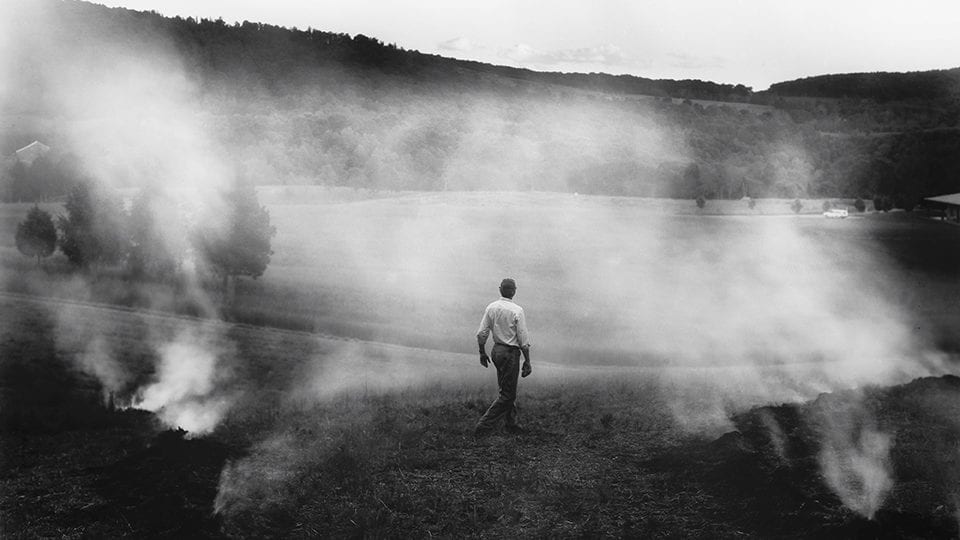In December 2017, Sally Mann (b. 1951) invited Bill T. Jones (b. 1952) for a photo session at her country home in Virginia. Death – its menacing approach or dark legacy – looms large in Mann’s work, and it’s no surprise to find the dancer-choreographer’s high cheekbones made skull-like behind the lens. “Almost a death mask,” she concludes in a video of the two day encounter, shown in the major survey making its sixth and final stop at High Museum of Art, Atlanta.
Sitter and photographer, both in their late 60s, are keenly aware they have entered their final chapter. Growing up in the American south, Mann’s work has often been concerned with slavery and the racism that replaced it. Jones, in part, inspired her monumental portraits of black men as she sought to reach across the “seemingly untraversable chasm of race.” In order to delve into these still prescient issues, Mann resorts to 19th century techniques and makes her own prints, at a time when most artists have replaced the dark room with an inkjet printer. She pours syrupy collodion on a glass plate from her large format camera, then dips it in silver nitrate. It’s bulky, messy work, but Mann embraces the imperfections of the materials, calling upon the “angel of uncertainty.”
Mann, who has spent much of her career asking unsettling questions, documented the southern landscape out of “shame and some inchoate sense of accountability.” She focused on markers of a violent past, including the site of the 1955 murder of 14-year-old African American Emmett Till, accused of seducing a white woman. In another, dust has formed on the plate, creating bullet-like dots on 2003’s Battlefields, Cold Harbor (Battle), a reminder of the destruction that once was a cry against nature’s indifference.
The exhibition opens in chronological order, where Mann’s career really started, with the Immediate Family series. This included portraits of her husband and three young children, all caught in intimate, unguarded moments. The works catapulted Mann to fame in 1992, depicting family members in various stages of undress and activity at their remote summer cabin – open and vulnerable. A quarter-century later, the intense controversy generated in the midst of America’s culture wars by these images of youth – latent with sensuality, violence and even death – seems a distant past.
Yes, the blood streaming from Emmett’s Bloody Nose (1991) or Virginia’s seemingly lifeless body in Last Light (1990) are still startling. But, contextualised, they appear as brutally honest depictions of fleeting hedonistic moments made with great maternal care and awareness of lurking danger. Mann uses the worn, cloudy surface of ambrotypes, or collodion positives, to gaze at her own mortality in often solarised or overexposed self-portraits after a riding accident left her bed-ridden. This show is a groundbreaking finale to Mann’s longstanding tour of important institutions across the USA.
On view at High Museum of Art, Atlanta, until 2 February.
Olivia Hampton
Sally Mann (American, born 1951), The Turn, 2005, gelatin silver print. Private collection. © Sally Mann.





